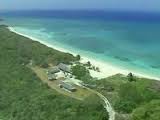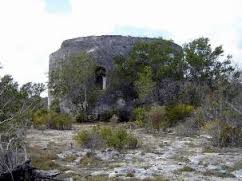Por su condición de ciudad portuaria, su extensa bahía de bolsa está rodeada de numerosos silotes, pero uno, Cayo Sabinal, es sin dudas el más emblemático y debe su nombre a la abundante presencia en el pasado del árbol de madera preciosa conocido con el nombre de Sabina.
La historia del cayo está rodeada de leyendas de corsarios y piratas que pernoctaban en la zona durante sus aventuras de saqueos y contrabando, razón por la cual en 1831 se edificó en la costa este del cayo el Fuerte de San Hilario, que sirvió como torreón y cuartel de la tropa y artillería española encargada de proteger la cayería de aquellos temidos marineros.
Más tarde el San Hilario fungió como Prisión de la Clase Militar, en tanto fue escenario de la única sublevación carlista de Cuba al ser escenario del único levantamiento de ese tipo en Cuba en 1875, cuando la guarnición apostada en el fuerte se alzó para respaldar el movimiento encabezado por Carlos María de Borbón en España durante la segunda guerra carlista entre 1872 y 1876, por los derechos al trono. El fortín emplazado en la mayor altura del Cayo Sabinal aún se halla en pie como testigo de aquel tiempo pretérito.
Como parte de este lugar en 1847 en la Punta de Maternillos quedó instalado el Faro Colón, punto de observación desde el cual se tenía dominio del antiguo Canal de Bahamas, imprescindible para alertar al Capitán del Puerto de Nuevitas y a San Hilario sobre cualquier ataque o anomalía. El Faro, aún activo, es uno de los más antiguos del país.
Debido a las muchas batallas navales perpetradas en la zona de Cayo Sabinal en las profundidades de sus mares abundan importantes barcos hundidos como el Nuestra Señora de Alta Gracia, el Mortera y el Pizarro, convertidos en verdaderos tesoros sumergidos.
En Cayo Sabinal el Premio Novel, Ernest Hemingway, escritor de sus muy populares obras El Viejo y el Mar e Islas en el Golfo participó personalmente en la búsqueda y caza de submarinos alemanes durante la II Guerra Mundial, además de adorar sus aguas por la riqueza para la pesca, desde el cual se trasladó a la ciudad de Nuevitas con su captura de peces.
Llega a nuestros días el Cayo Sabinal arraigado entre los lugareños, visitado por foráneos y constituido en enigma para estudiosos de la naturaleza y la historia, empeñados en desentrañar para futuras generaciones las interpretaciones de un pasado de encuentros y desencuentros, amores y desamores que terminaron sedimentando su modernidad.



